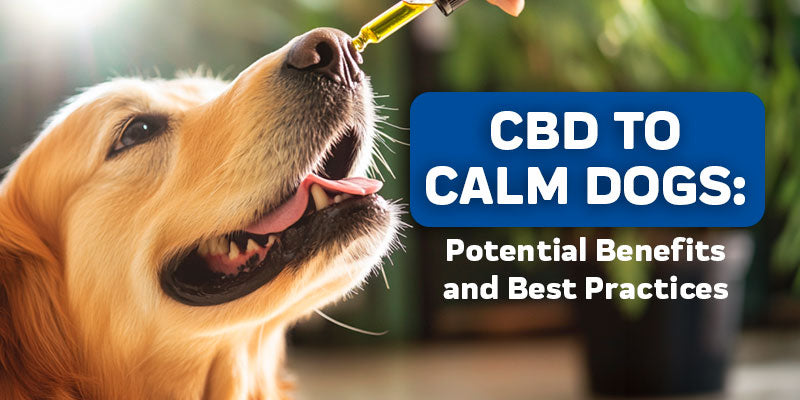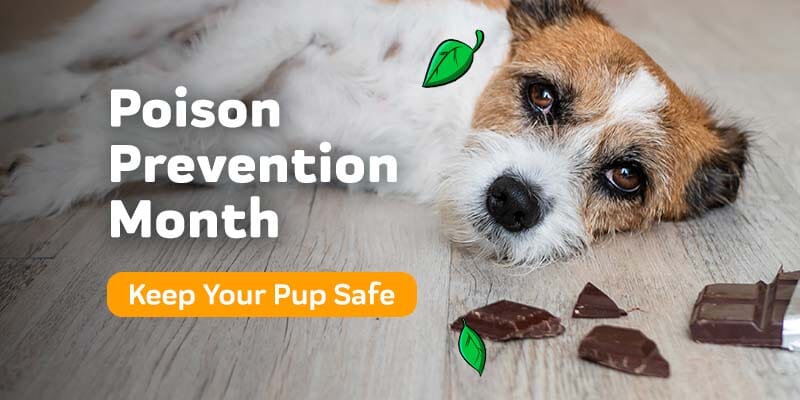
Have you fell head over heels with a three-legged dog that you want to adopt? Handicapped dogs are loving and resilient dogs which have the same joyful and fun-seeking personalities as the four-legged counterparts. But it is vital that you remember that these dogs will require a bit of extra tripod dog care and attention.
Affectionately called tripawd dogs among canine enthusiasts, three legged dogs will be an incredible addition to any household. Even with one less leg, three-legged dogs will have a fulfilling and happy life with the proper owner and care. Here’s a guide from Innovet Pet Products on how to correctly care for and have an enjoyable living with a three legged dog.
Three Leg Dog Introduction

Dogs may wind up handicapped from various different situations. Whether it was an accident, birth defect, or illness, the majority of dogs who’ve endured such physical limits have the ability to bounce back better than ever. As a pet owner, it is vital that you keep in mind that just because a pup does not have four legs doesn’t mean they will not have the ability to enjoy a full life. With healing, exercise, and time, 3 legged dogs may live a life that’s filled with all of the things happy pups love.
If you’re caring for a three-legged dog, it is vital that you know what part you play within his life. It’s your job to have the knowledge needed to give him the best environment and care possible. Dogs that have a disability must be well-exercised so that his joints may remain in good condition and further injury may be prevented. Depending upon your living circumstances, you might have to make spaces of your house handicap-friendly by placing ramps over stairs or developing a safe place just for your dog. With the proper amount of knowledge and love, you’ll be well-equipped to offer a three-legged pup a happy home.
What Do you Do If Your Pet Needs an Amputation?
If your existing dog requires an amputation it may be a heart-wrenching choice that may create different emotions for you. It is essential to remember that vets don’t suggest amputating a limb unless they think that it’s absolutely necessary. A vet will be evaluating your dog’s health in its entirety, analyzing his capability of functioning on a daily basis, and advising a plan of treatment that will offer him the best opportunity at recovery. If that advice includes a leg amputation, it might initially come as a surprise. If your vet has suggested limb amputation, it may be useful to create a list of questions to ask. How severe is the dog’s condition? What’s the process of surgery like and how quickly might you expect them to recover? Remember that the better educated you are, the better treatment it’s possible to offer your suffering dog.
It is vital that you note that an amputation doesn’t keep him from living a healthy and happy life; indeed, it may be a choice that will permit your pet to suffer the least amount of discomfort depending upon his underlying condition. Even though it might sound frightening, limb amputation is a fairly safe operation for dogs. And unlike humans, dogs usually have a more convenient time adjusting to their three-legged life just as soon as they fully recover.
Taking Care of a Three-Legged Dog After Amputation
While there are numerous general tips to remember when you own a three-legged dog, there are more unique guidelines you ought to understand if your pet has undergone an amputation. This may be an anxious and challenging time for both you and your dog, yet with patience and care, you will have the ability to bring balance and comfort to your pet in need.
If your pet has just undergone a leg amputation, it is crucial to follow all advice and instructions that the vet has given. This often will involve giving the dog pain medications and antibiotics in a specific dosage at a prescribed interval of time to assist in keeping him at ease and prevent a bacterial infection at the surgical site. Even as your canine’s condition improves, remember to speak to the vet before you adjust the dosage of painkillers that you’re administering to him. It also is required to offer him the whole antibiotic course that the veterinarian has prescribed.
When the dog initially undergoes a limb amputation, he’ll probably be uncomfortable and confused, both from the operation and adjusting to life with one less leg. When you bring the dog home, be certain to have soft and comfortable surfaces available for him to lay on as he’s recovering. He might experience a problem adjusting to initially walking on three legs, so it may be useful to keep him confined to spaces that have softer surfaces, like a rug or carpeting. When the dog initially arrives home from his amputation, he might need your assistance moving around. Make certain to speak to your vet about the right way to help the dog move after the operation so that you don’t cause him any discomfort at his amputation site. While this period may be stressful and uncomfortable for both you and the dog, it is vital to keep in mind that it’s temporary. By relying upon one another, you’ll have the ability to discover a new normalcy for your regimen.
Three-Legged Dog Adoption
A 3-legged dog for adoption is one other common scenario in which you’ll need to take care of a three-legged dog. If you are considering three-legged dogs adoption, he already has endured the amputation and adjusted to life with one less leg or was born with a congenital disorder.
Opting to bring in a three-legged dog for adoption is a huge choice which requires substantial consideration and commitment. If you’re considering a 3 legged dog for adoption, the workers at the office should have the ability to give you more details on his habits, mobility, and if there are any specific 3 legged dogs for adoption needs you must be aware of.
Presenting an Adopted Three-Legged Dog to a New Household
If you decide to add a three-legged dog to your household, it is vital to permit him time to adjust to the new surroundings. He likely has become used to his previous environment; therefore, give him ample space and time to adjust to his new environment. For instance, the pet you’re adopting might’ve never had to climb stairs before or been permitted to get up inside a chair and relax. In order to help him navigate those new environmental changes and challenges, you’ll need to work with the three-legged dog to train him to deal with new hurdles. Depending upon the disposition of the dog, he might be hesitant to immerse himself in a situation that he isn’t comfortable navigating. As his pet owner, it is your responsibility to help him build up his confidence in navigating his new area. Rely upon positive reinforcement training and sustain your patience during his adjustment period.
Basics on Caring for Three-Legged Dogs
Just as critical as it is to take care of the challenges the three-legged dog faces with amputation or adjustment after being rescued, there also are certain health considerations to remember for three-legged dogs, too. These are lifetime considerations you’ll have to actively monitor and incorporate into your lifestyle to keep your 3-legged dog thriving, healthy, and happy.
Sustain a Healthy Weight
Weight management is crucial for all dogs to sustain optimal health, yet even more for tripawds. Because 3-legged dogs are missing a limb, their distribution of weight is different than 4-legged companions. That means that when the dog is overweight, there’s extra pressure and strain placed on the joints, which already are compromised. A healthy weight is crucial to maintain health of joints, which will keep the dog more mobile and comfortable throughout his lifetime. Additionally, when the dog has additional body fat, it may cause inflammation inside his body, which may be risky for 3-legged dogs. To keep the tripawd healthy, keep her on the leaner side and sustain a healthy weight to decrease stress and strain inside his body.
Promote Health of Joints
Joint health is very important for 3-legged dogs because the onset of osteoarthritis (more on this later) or additional joint diseases may substantially impact their mobility. If you’re concerned about the dog’s joints, it’s highly recommended to speak with the vet for more treatment recommendations and options for preventative steps.
Dog Osteoarthritis
Osteoarthritis, called DJD (degenerative joint disease) and OA, is by definition the permanent and progressive deterioration of the cartilage that surrounds the body’s joints.
While arthritis is a medical word that describes joint inflammation, osteoarthritis is the word used while referring to a type of chronic joint inflammation that is directly caused by joint cartilage deterioration. Geriatric dogs, statistically speaking, are at the greatest risk for this disease.
Because of the introduction of various new supplements and treatments, treatment of osteoarthritis has significantly improved over the last couple of years. Unfortunately, because osteoarthritis and additional types of degenerative bone diseases like hip dysplasia are mainly inherited or genetic conditions, there aren’t any preventative steps it’s possible to take to protect your dog.
But, by observing your pet’s exercise regimen and diet and integrating supplements with anti-inflammatory qualities into his day-to-day regimen, you might have the ability to ensure his quality of life, as well as lessen his severity of symptoms. In taking a proactive part within your pet’s osteoarthritis care, it’s possible to help reduce the progression of this disease as you manage his overall comfort level.
Symptoms and Signs of Dog Osteoarthritis
Even though OA (osteoarthritis) is pretty common in dogs, it’s nevertheless distressing for both you and your dog. Depending upon the severity of the pup’s condition, symptoms might be barely detectable to debilitating. So, it is vital to pay attention to your pet’s general health, especially as he grows older.
If you see the following symptoms and signs related to osteoarthritis, you might want to speak to your vet for a thorough physical and treatment routine:
- Exhibiting changes in disposition or behavior
- Acting withdrawn or aggressive
- Yelping or whimpering in pain
- Lagging behind on a walk
- Complete or partial lameness/incapability of walking
- Shows indications of soreness or pain (fatigue, irritability, winces when touched, etc.)
- Reluctance to climb stairs, play, jump, walk, etc.
- Incapability of rising or getting up with ease, especially after resting or sleep
- Favoring a limb, limping, or stiffness
- Noticeable reduction in activity
Mainly dependent on your pet’s specific breed, joint disease might happen in the latter or earlier stages of her/his lifespan. Bigger breeds are more prone to different types of skeletal disease than smaller pups.
Inherited conditions like hip dysplasia are usually seen in Saint Bernards, Rottweilers, Old English Sheepdogs, Samoyeds, Alaskan Malamutes, Staffordshire Terriers, Labrador Retrievers, Golden Retrievers, and German Shepherds. Smaller dog breeds suffering with hip dysplasia include French Bulldogs and Pugs.
Managing Dog Osteoarthritis
With the dawn of advanced clinical developments over the past several years, treatment for canine osteoarthritis has improved a good deal. But, because these types of conditions are inherited, there isn’t any cure or prevention available.
Even though there’ve been a variety of products (which includes drugs and supplements) to ease your pet’s symptoms, as well as slow the progression of the disease, there is not any way to reverse the physical changes, like looseness discovered in bone/cartilage deterioration or loss, joints, and other associated symptoms.
Thereby, the main goal while offering osteoarthritic care to your pet is to concentrate on pain management: once medical signs are diagnosed, you as well as your vet might talk about a variety of options that will make your pet as comfortable as possible.
Since operations are cost-prohibitive for the majority of folks, medical management usually is the only realistic option for pet owners. Whether your dog is a young puppy displaying early osteoarthritis symptoms or geriatric dog experiencing chronic osteoarthritis, it is vital that you create a medical management regimen uniquely suited to your pet’s condition and needs.
Due to medical management being a multifaceted approach, it is better to talk to your veterinarian to determine the best course of action. Usually, she or he will more than likely use a blend of modalities to treat your dog, which includes the following:
Following A Weight Management and Diet Plan
Following your vet’s directions, formulating a weight management regimen is critical to the health of any canine that has osteoarthritis, especially for the ones who are medically obese. With stats reporting 50 percent of pets within the United States as overweight, it is important to address your pup’s eating habits and set up a diet which ensures your dog’s optimal health and weight.
The less weight a canine carries the less stress he will be placing on his fragile skeletal system. In helping your pup lose the necessary weight (and subsequently sustaining his ideal weight), it is possible to sustain his quality of life while decreasing the discomfort related to canine osteoarthritis.
Developing an Exercise Routine
One important step in any dog osteoarthritis health plan is setting up a day-to-day exercise regimen for your pooch. Depending upon the severity of your pet’s age, condition, and general health, your veterinarian should have the ability to make physical activity recommendations appropriate for your dog.
Get Sufficient Exercise
One common misconception about 3-legged dogs is that they won’t have the ability to exercise, but this isn’t the case. Tripawds are able to exercise and actually require adequate exercise to remain healthy and happy. It is important for a 3-legged dog to sustain controlled muscle tone as his muscles permit him to offset the additional strain that’s placed on his joints and additional limbs because of his missing fourth limb. Swimming may be an excellent option for 3-legged dogs since it doesn’t place added strain upon their joints.
Remember that a 3-legged dog will become exhausted more rapidly than a pup that has four legs; therefore, be certain that there’s time built into his exercise for rest and water. As you and your pooch bond, you’ll have the ability to recognize signs that he’s becoming exhausted and needs a break. Depending upon the dog’s mobility, there also are tripod dog accessories which may be used to assist in facilitating exercise, which may be useful for older dogs.
Explore Gear and Modifications to Help
Besides the aforementioned tips, there’s also a whole market out there with gear and modifications made to help tripawds thrive. While most 3-legged dogs have no problems in their daily life, some accessories will assist in helping to improve their mobility and make it more convenient for them to navigate their environment. For instance, there are non-slip dog socks and booties that will help to boost your tripawd’s traction in order to prevent slips.
With proper care and patience, you as well as your 3-legged dog will lead a fulfilling and happy life together!
Sources:
Caring for Three-Legged Dogs and CatsHow to Care for a Three-Legged Dog
What You Need To Know Before Adopting A 3-Legged Dog
Three-Legged Dog or Cat
How to Care for Three-Legged Dog
















